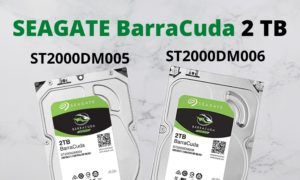Despite their identical physical appearances, Thunderbolt ports boast superior speeds and harbor key internal discrepancies. This guide aims to elucidate the disparities and offer essential insights into choosing between them for tasks like charging, data transfer, and more.
Whether you’re charging a mobile device or connecting a peripheral to a PC or Mac, chances are you’ll be utilizing either a USB port or a Thunderbolt port. However, with the advent of USB Type-C (commonly known as USB-C), Thunderbolt 3, and Thunderbolt 4, distinguishing between the three has become challenging. Despite their physically compatible connectors and cables, manufacturers often neglect to provide clear labels, making it difficult to differentiate between them.
Instead of leaving you in the dark, let’s explore the nuances that set Thunderbolt and USB-C apart and guide you on choosing the appropriate one based on your device.
Understanding USB-C
The Universal Serial Bus (USB) is an industry-standard connector designed for transmitting both data and power through a single cable. The USB-C connector, developed by the USB Implementers Forum (USB-IF), offers a distinct oval shape, allowing for easy flippability. With over 700 USB-IF member companies, including tech giants like Apple, Dell, HP, Intel, Microsoft, and Samsung, USB-C has become ubiquitous across various tech categories. Its capabilities include data transmission at speeds up to 20Gbps, power delivery of nearly 100 watts, and support for DisplayPort audio and video signals.
USB-C’s versatility makes it a go-to choice for charging external hard drives, smartphones, smart home devices, and more. Its oval-shaped connector eliminates the hassle of determining the correct orientation, providing a seamless user experience.
Unpacking Thunderbolt
Thunderbolt 3 and Thunderbolt 4 ports share identical physical features with USB-C ports. Thunderbolt, essentially a superset of USB-C, offers similar functionalities but at faster speeds. Thunderbolt 4, the latest iteration, enables data transfer at up to 40Gbps—twice as fast as the fastest USB-C ports. Thunderbolt’s capabilities extend beyond basic data transfer, unlocking features like connecting displays and expansion docks through a single cable.
Major tech players, including Apple, have embraced Thunderbolt, integrating it into their devices. Thunderbolt 4 supports dual 4K displays or a single 8K display and doubles the supported PCI Express data rate to 32Gbps.
Despite their similarities, Thunderbolt ports maintain backward compatibility with USB-C devices. This means peripherals supporting both Thunderbolt and USB-C can seamlessly function with a Thunderbolt port, albeit limited to USB-C speeds and capabilities.
Differentiating Between Ports
Identifying whether a port is USB-C or Thunderbolt isn’t always straightforward. Some devices, including Apple’s MacBook Pro and MacBook Air, may lack explicit labels on their Thunderbolt ports. Reading product specifications, checking documentation, or referring to the manufacturer’s website becomes essential in such cases. Symbols like lightning bolts on cables may indicate Thunderbolt compatibility, but consistent labeling remains an issue.
Choosing Between Thunderbolt and USB-C
While Thunderbolt’s superior speed may suggest it as the obvious choice, the decision isn’t always straightforward. In scenarios like charging a laptop, both USB-C and Thunderbolt ports often exhibit similar capabilities. Interchangeability becomes apparent when connecting Thunderbolt-supported laptops to devices lacking Thunderbolt compatibility.
For tasks like connecting peripherals such as printers, mice, and keyboards, the full speed of USB or Thunderbolt may not be necessary. However, media professionals frequently transferring large amounts of data benefit from Thunderbolt’s accelerated speeds.
In conclusion, neither Thunderbolt nor USB-C emerges as a clear winner. Their differences cater to distinct use cases, and the choice depends on individual needs. As technology evolves, new standards like USB4 may replace them, bringing forth a new set of differentiators to explore.
Related Links
Alternative 6 other way to Format Write Protected SD Card
Best Gaming Headphones Under Rs. 2000
Best Budget Gaming Keyboard Under 2000
HDD All Specifications & Features Explained Well in Detail.
RAM Guide for Best Gaming RAM – 2020 Buyer Guide



